
Previously held on May 30, Memorial Day is now observed on the last Monday in May, commemorating those who died in United States military service. First in remembrance of Union soldiers who died in the War Between the States, in the years and wars since it is a commemoration that encompasses ever-widening conflicts.
Frenchtown takes it seriously, does it right, in the traditional small town manner of bygone days. The graves of veterans are decorated. Flags line the main street. It is a day for parades. Families, children on bicycles and babies in strollers, dogs on leashes, all line the parade route. Members of the VFW post are in the parade, with older veterans in classic convertibles polished to a gleaming finish, boy scouts and girl scouts, cub scouts and brownies. The high school band plays a medley of patriotic tunes. Men from the Frenchtown volunteer fire department come marching by. It's no time to have a fire in your house, barn, or hay field as every piece of equipment from the nearby portions of the Delaware Valley joins the parade - the Boro of Frenchtown and neighboring Kingwood Township, Upper Black Eddy across the river in Pennsylvania, Otisville and others. A volley, a shadow volley from across the river. Taps, and the crowd becomes still. A Piper Cub swoops low over the bridge, and drops a wreath of flowers into the water. A model boat is launched, in remembrance of those servicemen and women who died at sea. There are speeches of course - at the Doughboy statue in front of the elementary school, at the VFW post, and the parade concludes at the cemetery. The parade concludes, but we should not forget. Remember, and keep them in mind.


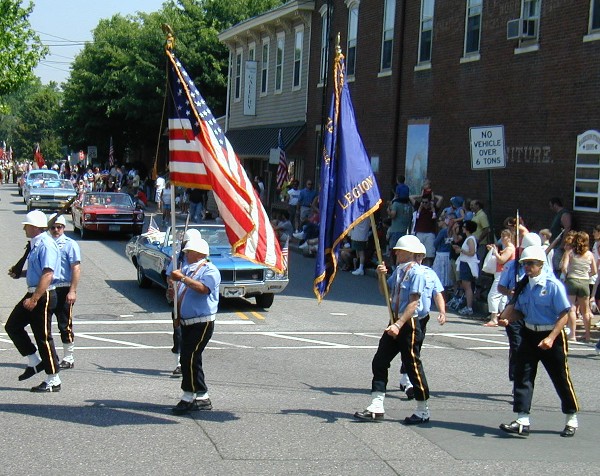

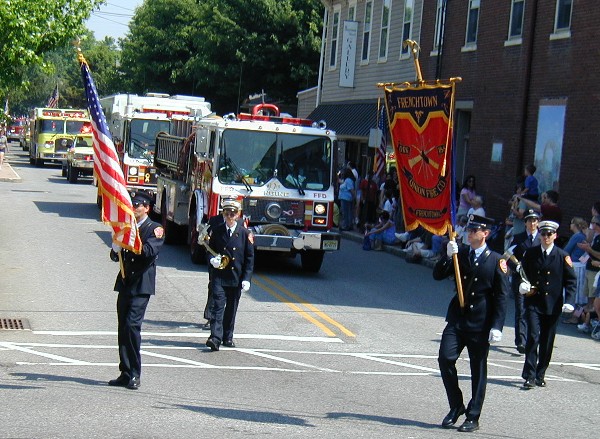


The invitation read that Heritage Conservancy and The Hortulus Farm Foundation, Renny Reynolds and Jack Staub, founders, sent a cordial invitation to celebrate their new partnership with reknown grower and educator Shepherd Ogden. I know Shep, had previously visited Hortulus Farm with great admiration for its beauty. Of course I sent my RSVP and marked the date on my calender.
Located at 60 Thompson Mill Road in Wrightstown, Pennsylvania, Hortulus Farm is not that far away from BelleWood Gardens, more of an over the river and through the woods journey. And this was one of these magical summery evenings: clear gentle light as the sun began to set, not the least wisp of a cloud, and silken air. Large potted plants, a huge brugmansia in full bloom, abutilon standards, and other gorgeous, unusual plants set the stage for the event. After parking within a tempting view of the 60,000 square feet of greenhouses we strolled over to the wine bar. Then, glass in hand, wandered over to the lacy confection of an antique white metal gazebo and joined the other guests.
The event celebrated the formal announcement of the new partnership of The Hortulus Farm Foundation and Heritage Conservancy. Also, the appointment of Shepherd Ogden, reknown organic grower and educator, as managing director of Hortulus Farm Nursery.
A little background for those of you who might not be familiar with Hortulus Farm. Renny Reynolds, a reknown garden designer and noted garden author Jack Staub purchased the first piece of property that was to become Hortulus Farm in 1980, together with the classic 18th century Isaiah Warner stone house, two huge dairy barns, and assorted out-buildings. More land was added over the years, bringing the farm to 100 acres, and seeing the development of 30 acres of gardens. Native and naturalized trees, shrubs, and herbaceous perennials in woodland and open settings, linked by paths connection 20 different gardens and winding over bridges and between ponds to create a quiet, restful, invitiation to stroll and enjoy the peaceful ambiance.
Such a landscape takes maintenance. There are several full-time staff and a rotating crew of 20 seasonal interns. The retail garden center, offers for sale or rental superb perennials, uncommon container plants, standards, and topiaries, many rare and unusual and all of them gorgeous.
Today's event is the culmination of work that quietly began at the turn of the century, when, in the year 2000, Heritage Conservancy (a regional leader in preservation of natural spaces and historic sites) helped Renny Reynolds and Jack Staub to permanently preserve Hortulus Farm. In March 2006 the two men generously gifted the Nursery to Heritage Conservancy. It was at this point that Shep Ogden became managing director. Profits from the nursery will allow Hortulus Farm to do more than "wash its face." In addition to maintaining Hortulus Farm, profits from the nursery will help fund the preservation efforts of the Heritage Conservancy.
Laudable goals, a superb garden, and one easily, pleasantly supported with the purchase of fabulous plants. I came home with a variegated brugmansia and two intreguing begonias. Every little bit helps, and I'm certain to go back.
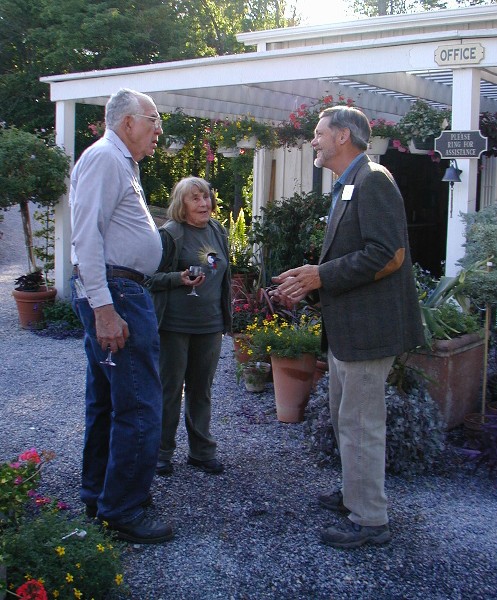
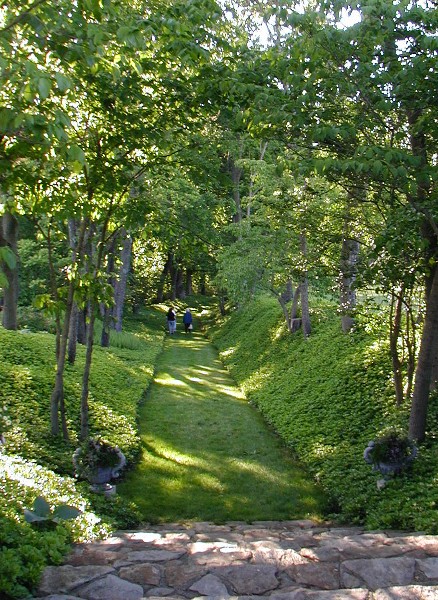
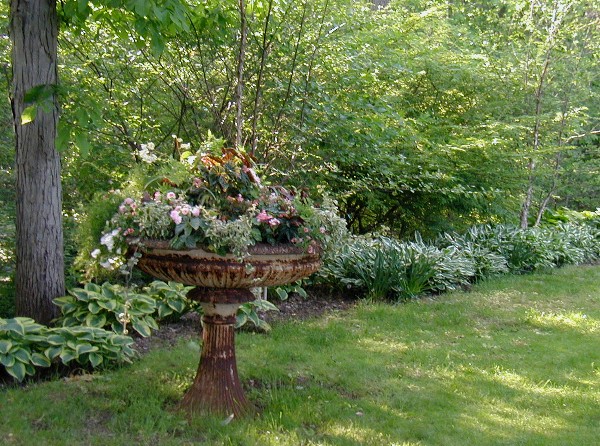
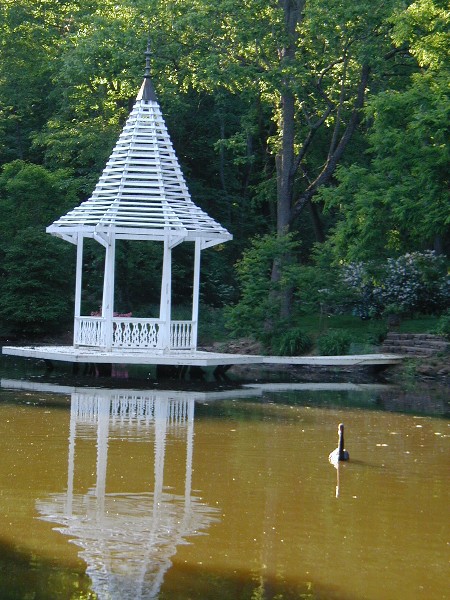
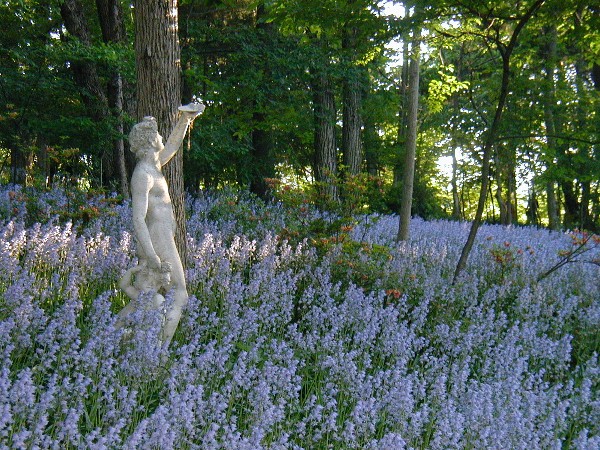
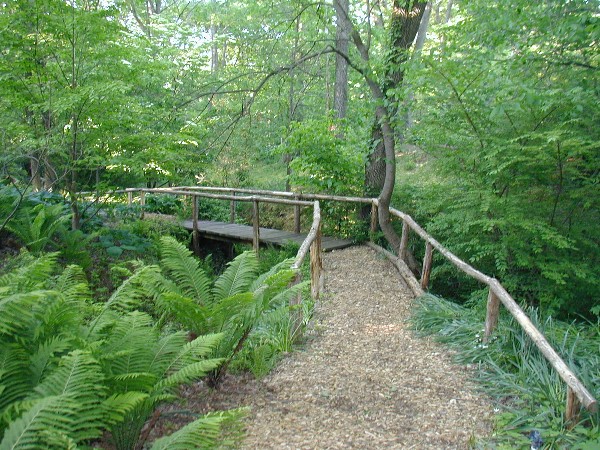

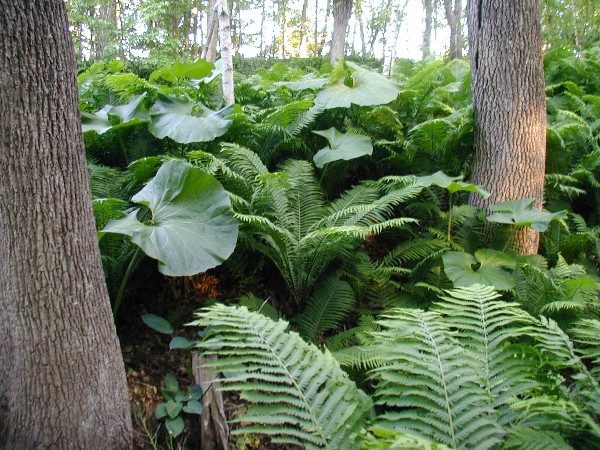
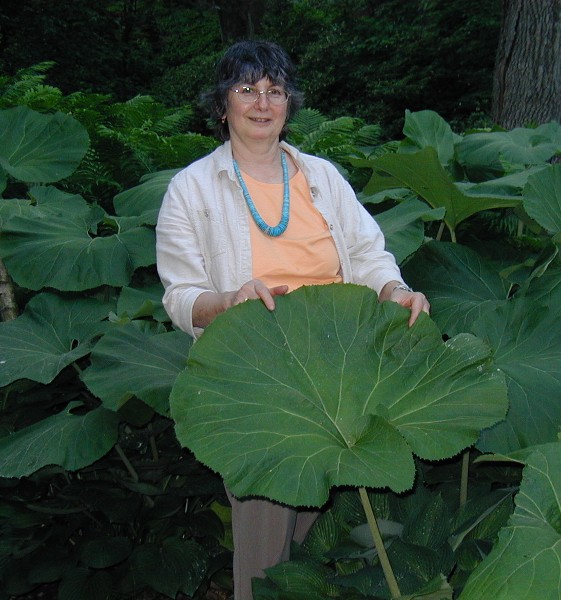
This entry has taken on a life of it's own, as memes are wont to do. It has been given a separate listing on the Diary page, from which you can click over to see what books have been mentioned. Do consider joining in, and sharing your favorite gardening books with the rest of us.

At last there's been rain, a pleasant, goodly amount. The garden (and especially the weeds!) are green and verdant. Nor is growth limited just to chlorophyllitic plants. I found the first mushrooms. Actually, considering how big it is, that it was located just a couple of feet off the side of the driveway on a large tree, and I was walking up and down the driveway multiple times today it would be difficult not to notice it. Of course the next thing to do is call Carol, my mushroom maven friend. She wasn't terribly enthusiastic, but said I might as well bring it along when I came to dinner this evening.
Most mushrooms break loose quite easily, other than the shelf mushrooms growing from the side of trees that is. This one didn't want to come free, not even the two smaller ones growing on a nearly piece of wood that was lying on the ground. Oh well. With some tugging at the scaly black base I managed to get them free. So with my prize in hand I drove over to John and Carol's. One quick look is all it took. "Dryad's saddle." said Carol, "It's edible, but not very good." Now that's disappointing. We had a quick look through Carol's collection of mushroom books and they all said much the same. But the mushrooms I'd found were, Carol said, in much better nick than she'd ever found, fresh and more tender = not completely woody. We sniffed at the cut surface, and it does indeed smell pleasantly of watermelon.
I have a very good book, "The Essential Reference: Vegetables from Amaranth to Zucchini" by Elizabeth Schneider (William Morrow imprint of HarperCollins, 2001) that include good information on mushrooms. So home I went to check it out. Nothing, no mention of dryad's saddle. (And, by the way, a dryad is a tree-dwelling nymph.) So I decided a quick Internet search was in order. Again, the usual advice was that you could eat it but why bother. Then I found Wild Man Steve Brill's web site.
And he has a really interesting sounding recipe: mix together one part red wine vinegar with two parts olive oil, season with thyme, tarragon, rosemary and garlic, and some tamari soy sauce. Marinate thick slices of tender dryad's saddle overnight. Drain. Place on a grill set in a rimmed cookie sheet and bake in a 350° Fahrenheit oven for 20 minutes.
I printed it out and went back to John and Carol's. Decided a photograph was in order. Went back home for the camera. (Good thing we live only a mile apart.) Carol called: she had white wine vinegar but no red. No tamari soy sauce but she did have ponzu (that's a Japanese soy sauce based citrus flavored product.) I had fresh garlic and thyme, she had dried tarragon and rosemary. Back I went with camera, red wine vinegar, a good quality extra virgin, first cold pressed olive oil, etc. We grated, mixed, sliced and marinated. We like thyme so used a goodly measure, grated one large clove of garlic, a glug of ponzu - it's that kind of recipe. Tomorrow, ah - tomorrow we'll decide for ourselves if dryad's saddle is or is not to be included in our future mushroom-gathering.
Update: Wild Man Steve Brill's recipe does indeed yield a tasty dish. It is important to use only the tenderest pieces, or the mushroom is somewhat chewy. And, while tasty, it does not have that burst of earthy mushroom goodness that chanterelles, for example, so excitingly have to offer. Doesn't mean we won't gather any dryad's saddles that providentially come along. But not with the same fervor with which we search for chanterelles.
It's the biggest and the best plant sale in the Garden State. Every spring Rutgers Gardens holds a Spring Flower Fair. "Flower" is actually a misnomer, as the sale features rare and unusual trees and shrubs, choice perennials for sun and shade, a superb array of tender perennials, bamboos and ornamental grasses, annuals, herbs, and vegetable plants. A phenomenal amount of work goes into it, from sourcing, choosing, acquiring the plants and setting them out in time for the sale. I'm just one of the plant experts available to answer questions. Today I happily hung around the specialty plant section: cannas and banannas, funky begonias, assorted elephant ears, strange succulents, wonderful sweet potatoes (even in bloom! I've never seen their attractive, morning-glory-like little lavender flowers), fabulous coleus, palm sedge, tibouchina, and more, and more, and more.
Today's class at the New York Botanical Garden was titled The Exuberant Summer Garden. Our focus, mine as instructor and that of the 15 students who registered for the class, was to explore the funky bulbs and exotic tender perennials that provide the summer garden with that wow! factor. I have such a good time with my classes, offering students a helping hand down the garden path.
Students also have a good time, getting information I know they need, answers to perplexing questions, and introduction to a plethora of plants as well as design suggestions that show them off at their best.
"Complicated subject explained in a thorough, detailed way . . very warm instructor." Color and Combination in the Herbaceous Border.
"A great way of looking at and learning about Patterns in Nature on so many levels - science, art, math, aesthetics - human appreciation & great interplay of all of these. The teacher was thoroughly engaging, yet in a most humble, unpretentious way." Patterns in Nature.
"Very knowledgeable instructor. Practical . . . helpful information." Bulbs in the Landscape.
Ellen had mentioned it last month - "There's a plant swap at Steve and Melody's early in May. Do you want to go?" Assuming I would not want to go to a plant swap? That's some kind of an oxymoron. So in the run-up to the Sunday event I potted up a dozen or so wild sweet William, Phlox divaricata, that had seeded into the path along Magnolia Way, as well as some Brunnera macrophylla and Polemonium that had done likewise. As an aside; I know some people yank plants at the penultimate momment and pop them into a plastic bag. It's stressful for the plants. Furthermore, I pot up my offerings in a reasonably good soil mix and keep them, well watered, in the shade. Call me overly fussy, but this increases the odds of success. By the time they go to their new home, these plants are recovered from digging / disturbance and are ready to settle in and happily grow away in their new location. And a label is helpful too. Obviously, it's different if you're going through someone's garden and they offer to dig a start of this or that for you.
So off we went on "The Day" - me and Ellen and her daughter Danielle, a car full of plants, tuna maccaroni salad and some brownies as our contribution to the pot-luck lunch.
First we had lunch, next a garden tour, and then the plant exchange. This was very relaxed, not the feeding frenzy of sharks like some that I've been to. Every swap I've been to has had a different modus operandi. Sometimes you line up, choose a plant, the next person takes one, and so on until everyone has taken a plant. Then you get to go again. Or, you see something you like and ask the donor if there's something you brought that they'd like to swap for. This swap was more relaxed. Choose something. Move it aside. Go choose something else. Set it with the other plant. You get the idea. With around a dozen people, there were lots of plants from which to make selections, and not so many people that you couldn't get near the plants to make a choice. Good manners suggested that even when there were multiples, you take only one of something until other people had had a chance at it.
I came away with a Bletilla striata, a hardy terrestrial orchid; Calycanthus floridus or Carolina allspice, a native shrub with fragrant maroon flowers in springtime; Xanthorrhiza simplicissima or yellowroot, another native shrub, low growing, shade tolerant, with trailing tassels of greeny brown flowers in early May, and a handful of other things that caught my fancy.
Steve's idea of a garden tour is more like a plant hunting expedition. He happily shows off what's growing in the garden (and keep in mind that this is a man who has the typical form, the white one, the variegated one, the prostrate or fastigiate form . . . you get the idea.) Generous, he's more than happy to share herbaceous plants that are sprawling out beyond their alloted space.
I got a a generous number of runners of Pachysandra terminalis 'Green Shine', a very glossy-leaved pachyandra cultivar. Other people were delighted to receive a division of variegated lily of the valley, Convallaria majalis 'Striata', which I already have.
A lovely day, providing pleasant memories as well as plants to enhance my garden (and send extras from my garden to welcoming new homes.)
"Some cacti are in flower," Jerry said, "and I know you'll want to see them. Bring your camera when you come visit." Now, when Jerry says something like that I'm often in for a real treat. He has a world-class collection of cacti and succulents, with a fantasy display of shapes, colors, and textures. Today's display were Echinopsis hybrids created by Bob Schick in California. Rigorously selecting only the best, Shick named over a hundred cultivars reknown for elegantly shaped large flowers with brilliant, intense colors, some with two or three colors within the same flower.
Native to central South America, there are a number of species of Echinopsis, somewhere between 50 and 100. They can be shrubby, tree-like, or columnar. To my untrained eye, out-of-flower plants look like small, round, green cacti. In flower - ah, now that's a different story.
"Some cacti are in flower," Jerry said, "and I know you'll want to see them. Bring your camera when you come visit."
Right on.
Deer are large. They're relatively obvious and easy to see - especially when they stand there, nipping off tulip buds, dining on dahlias, or relishing your roses. Voles are insidious. Little mouse-size creatures with short tails, they burrow away underground eating tulip bulbs, crocus corms, the roots of hosta and Japanese forest grass, kill young trees by girdling the bark. I've seen roses turned into the leaning tower of Pisa, unsupported by roots. The volume of voles in my garden probably equals, if not exceeds, that of deer. Deer live longer. Voles breed sooner. Deer usually have twins, infrequently triplets. But that's only once a year. Voles have litters. Again. And again. And again throughout spring and summer, and for all I know, all fall and winter. Why? Voles make up in sheer numbers what they lose with a short life. Just about every predator dines on voles. Great horned owls and red tail hawks do. Snakes likewise. I've seen a red fox in winter pounce, with a double front foot thrust into the snow and come up with a vole before trotting off into the woods.
So when I was visiting Bea and Jerry this afternoon, and Curtis, the young man who works outdoors, in the greenhouse, and helps with the sheep drove the Gator up to the house in a rush and we saw a young red fox craddled in his arms we were delighted.
He'd come across a litter of four fox pups, jumped off the Gator, chased one down and brought it up to the house to show us. It was darling, with the softest fur, elegant black stockings like I envision on a Parisian street walker, and a white-tipped tail. At this age, the pup is weaned onto solid food, voles and mice that the vixen brings her young ones to teach them how to hunt. A few minutes admiration, and Curtis took her back to where he found her. She'll return to her family. Soon enough, she'll strike out on her own. And the natural predator / prey relationship will continue in its endless cycle.
There's a breeding farm on my way home. Each spring it's a delight to see the mares and foals in the fields. Today I stopped, and walked across the road to take some pictures. Curious, the horses came over to see who I was and what I might be up to. The gawky long-legged foals with a stubby brush of tail are endearing - running down the field with a sideways prance and kicking up their heels, awkward-seeming pose as they twist head and neck under mama's belly to nurse, or collapse all in a heap for a nap in the spring sunshine.
The third and final meeting of Color and Combination in the Herbaceous Border, my certificate level class at The New York Botanical Garden. A somewhat cloudy day, but still a wonderful day to be in a garden. What changes in a scant 14 days between our initial meeting and our last one. There's that about springtime - it changes from morning to noon to night.
Have you ever wondered how they do it? There's no magic wand, casually waved and suddenly poof things change. In a sense, it's the same way you and I do it. Plants come out, new plants go in. The difference - it happens all at once, and on a scale that's difficult to replicate at home.
Consider the Tulip Walk. Thousands and thousands of tulips are ordered in the summer. In the fall, the annuals are evicted and all those bulbs are planted. A spectacular display in April and May. As the petals drop and flowers fade, all those bulbs are dug and discarded. (And no, don't get your hopes up. The bulbs are discarded, not distributed.)
In public parks and gardens there's forethought and planning, the budgetary resources, and the staff to execute the designs.
You don't do this at home. At least I doubt that you do. I certainly don't. Not only is it a costly business, the display has a transient effect. Once spring bulbs fade there's a blank slate, a gap. A more modest grouping of tulips, daffodils, or hyacinths followed by some annuals and combined with perennials is more sustainable. Further, the bulbs can remain from year to year.
Notice how closely the annuals are going in. As soon as they're planted the beds are full of flowers with not the smallest gap between each plant. It's spectacular from the get-go. That's what we expect from public displays. They should look marvellous at the moment we're there to see them. Unlike our own gardens, where we see the plants' growth and enjoy the unfolding of bud into flower. So, tulips gone, annuals in, and it looks as if a fairy godmother had waved a magic wand. Enjoy. But only for a month. The annuals are packed so closely that by June they'll be overcrowed, overgrown, and having problems. Not to worry, they'll be coming out and the next act, I mean next set of plants, will be ready to come on stage.

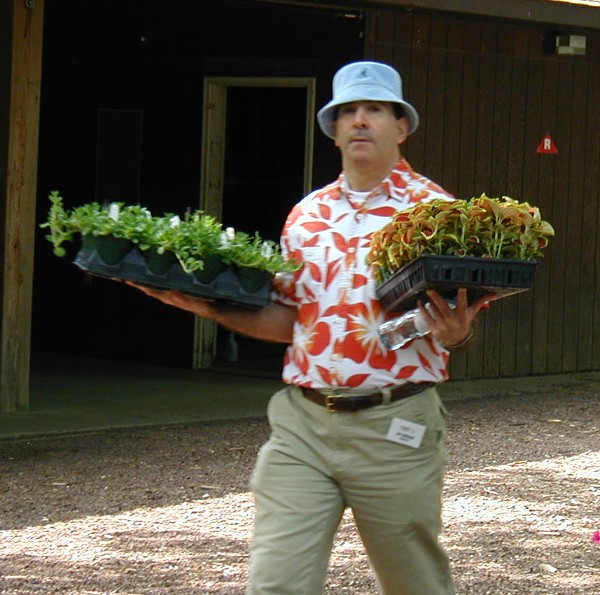
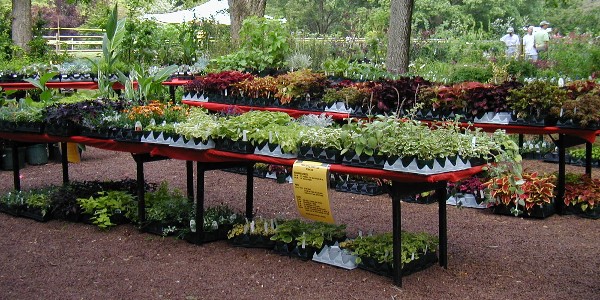

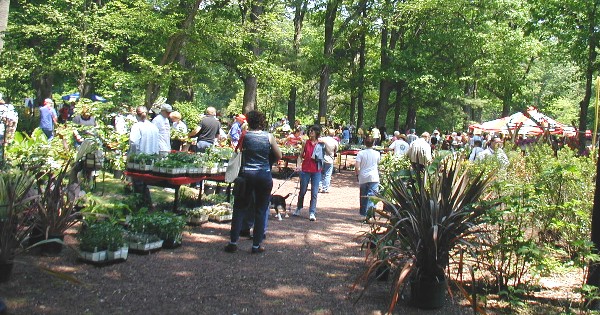
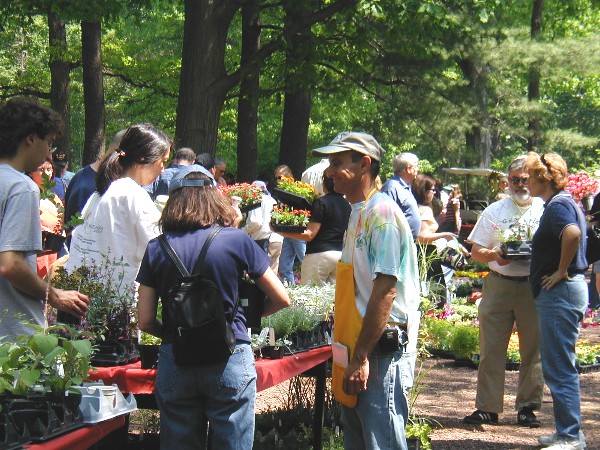
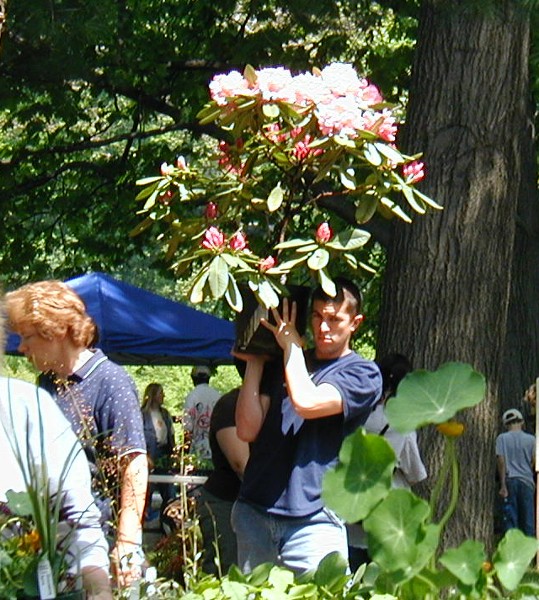
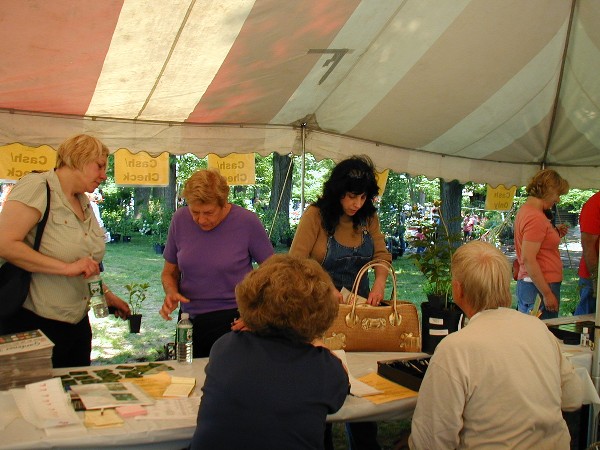
Considering that plants are gathered here which would otherwise require trips to several different specialty growers,
all are of excellent quality, and expert advice is freely offered . . . I'd say, "Yes. This is a great deal."
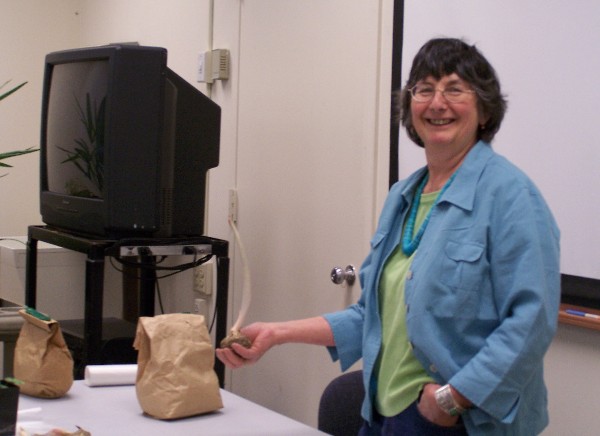

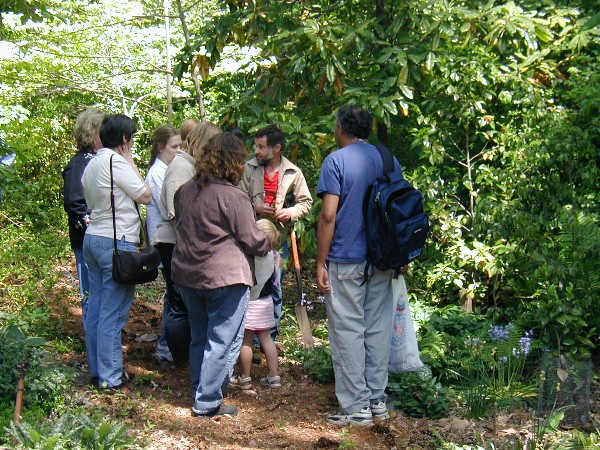
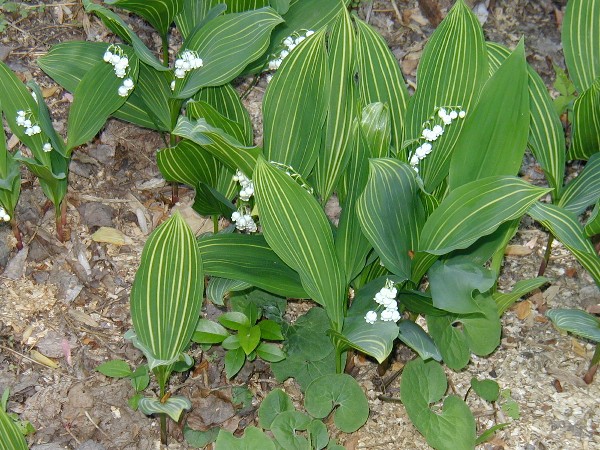
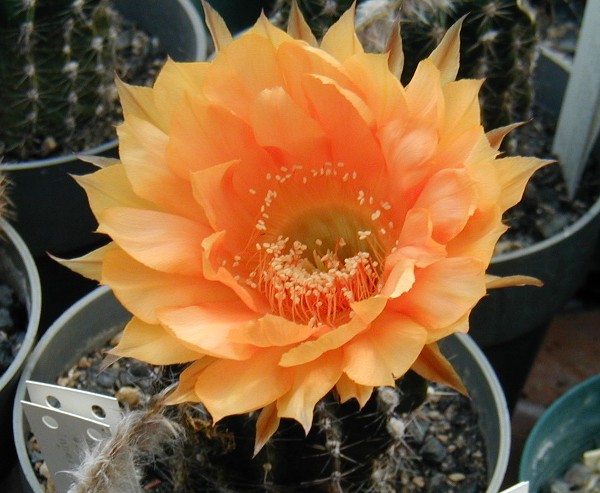
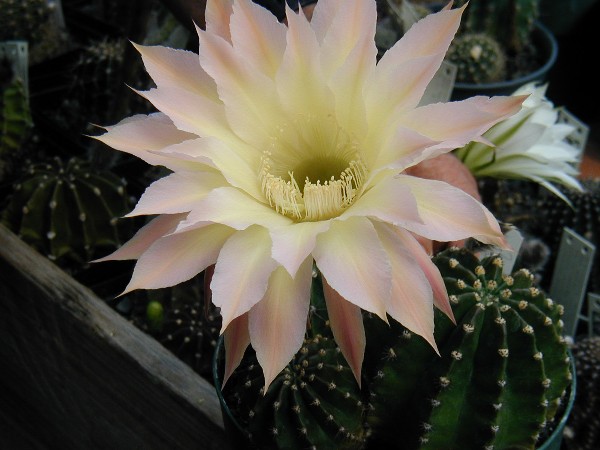
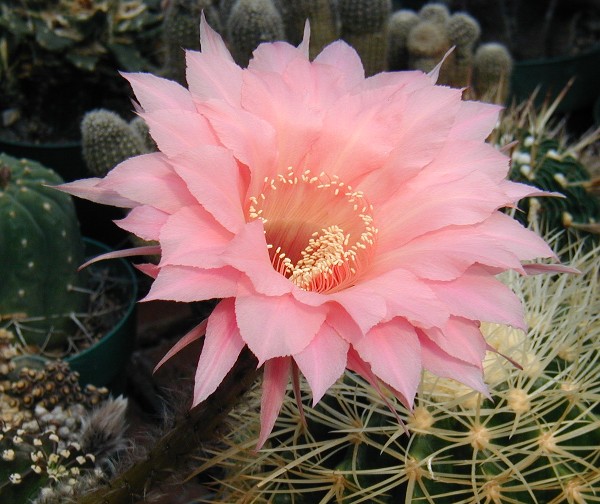

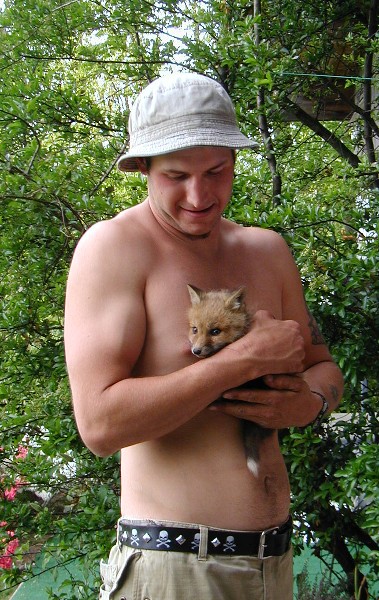
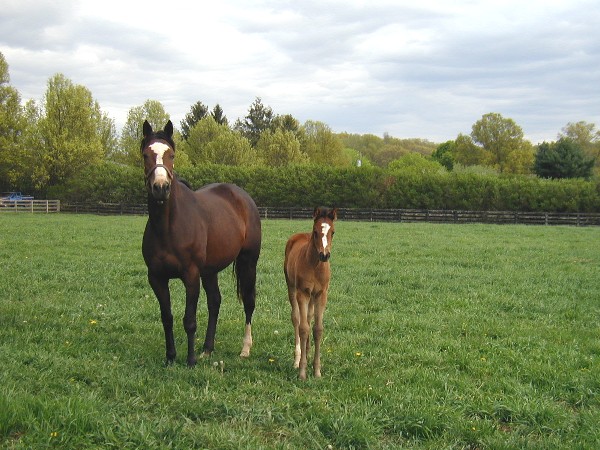
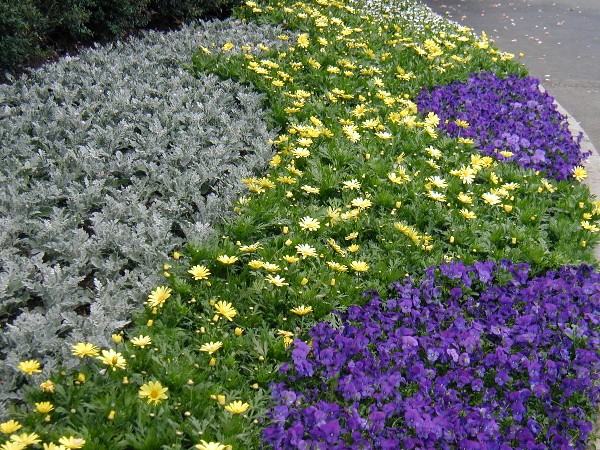



Herbaceous perennials are, well, perennial, and most remain from year to year.